Newsletter - Summer 2018
Summer is just around the corner, it's a good time to get into the garden
Check your needs of the following vegetable seeds now, or whatever you need for your area from the full catalogue.
Seeds to plant through Spring/Summer
 Amaranth
Amaranth
 Artichoke
Artichoke
 Asparagus
Asparagus
 Bean, Bush
Bean, Bush
 Bean, Climbing
Bean, Climbing
 Bean, Bush Snake
Bean, Bush Snake
 Bean, Climbing Snake
Bean, Climbing Snake
 Beetroot
Beetroot
 Cabbage, Chinese
Cabbage, Chinese
 Capsicum
Capsicum
 Carrot
Carrot
 Celeriac
Celeriac
 Celery
Celery
 Chia
Chia
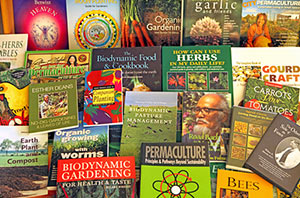
Extended!
Book Special - 30% discount on ALL titles.
Our stock reduction sale for Spring 2018 has been extended to the end of the year, gardening books make a great present! We are offering a massive 30% off all our books, DVDs, and wall charts. Prices will remain listed at full price but we will manually deduct 30% discount off any books on your order when we process your order.
Browse our range of books here
Recent additions to our seed range
Growing Beans
By Penny Ossowski
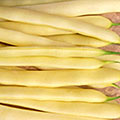
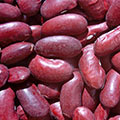
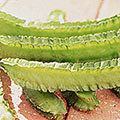
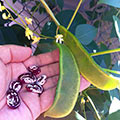
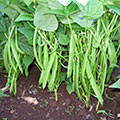
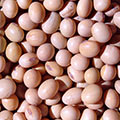
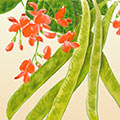
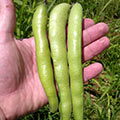
Do you like beans? The answer is not a simple ‘yes’ or ‘no’, first we have to specify the type of beans. There are broad beans, runner beans, green beans, baked beans, dried beans, soybeans, mung beans, madagascar beans, lima and kidney beans just to name a few, they all belong to the legume family. This month we are looking at the green, French, string, round or common bean, which we find in many home gardens - maybe you have another name for this vegetable.
The Green bean originated in Central America and is thought to have been brought to Europe by Columbus. At the time the broad bean was the only commonly grown bean in Europe, therefore, the green bean was originally grown for its seed and only later, around the 18th century, it was found the fleshy shell of the younger bean was indeed very flavoursome.
French Beans are another vegetable brought to Australia with the First Fleet and they were planted on Norfolk Island in March 1788. The green bean includes dwarf, bush and climbing varieties, stringed and stringless, longer and shorter beans and a variety of colours including the attractive purple beans. The variety, Lazy Housewife’s Bean is reported to be the first stringless bean and can produce 561 grams a plant compared with Stringless Pioneer which produces 58grams per plant. The Purple King produces dark purple pods which turn a deep, rich green when cooked, while the Snake bean produces stringless pods which can grow up to 50 cm long.
There is a variety of beans for almost every situation, it just may take a little research to find the one suited to your garden and palate. If you want to grow the climbing varieties, plant next to a trellis or build a tepee or even better plant them amongst your corn crop, they grow very well together.
Beans like a slightly acid soil with a good supply of potassium and a pH of 6.5-7.0. Don’t plant bean seeds directly onto fertiliser as their seeds are very sensitive, put a layer of soil between any fertiliser and the seeds. Bean seeds like to be planted deep and sown into moist soil and then don’t water them again until the plants appear. Plant bean seeds directly where you want them to grow and hill the soil as they grow taller. Seeds will usually germinate within a week of planting. Once growing, bean plants like to be kept moist. Most beans are ready to harvest about 2 months after planting.
Bush Bean - Redland Pioneer: Stringless, popular old-style flat green bean 17-19cm, likes summer heat
Bush Bean - Royal Burgundy: Has purple pods, can be eaten raw or cooked, well suited to cooler areas.
Climbing Bean - Blue Lake: Green, fleshy, stringless and tender when mature. Heavy bearing with rounded pods 14-17cm, does well in warm areas, also suited to freezing
Climbing Bean - Purple King: Straight, flat, bright purple pod to 17cm, popular variety, prolific and harvests over many weeks, turns green when cooked, hence is called Magic Bean.
Snake Beans, Winged Bean and Sword Bean are better suited to growing in our Summer months than the cooler months.
Red Lima, Madagascar and Borlotti beans are all grown for their seeds and grow better in the warmer months.
You will find a large range of old traditional open pollinated bean seed to buy online from Eden Seeds.
The main pest of the French bean is the Bean Fly. Soil hilled around the base of seedlings will not stop the bean fly stinging the plant but may allow the plant to grow some extra roots to stop it falling over. Spraying with garlic spray may help. The red spider mite can attack beans. The red spider mite lives under the leaf but will be noticed by yellow/white spots appearing on the surface of the leaves and by fine cobwebs on the tips of the leaves. If you look under the leaves you will see the small red mites. These are a bigger problem during dry weather. Spraying with a soap spray or wettable sulphur can help with them. Aphids, caterpillars and green vegetable bug may also attack beans. Rust can also be a problem with some varieties.
Pick beans before the seeds inside begin to bulge and before they become tough and stringy. If they get away from you, shell the beans and eat only the seeds. Make sure you harvest the beans when they are dry and store them unwashed in plastic bags in the vegetable crisper of the refrigerator for up to 3 days. Wet beans will develop black spots and decay quickly.
As with much of our home produce we end up with an oversupply at times, the best way to store green beans is to freeze them. Make sure the beans you freeze are top quality, freeze whole or chopped. To freeze beans blanch in boiling water, cool quickly, drain well then pack into bags removing as much air as possible, label and freeze as quickly as possible.
Ways to use French Beans include fresh as you wander through the garden, in salads, stir fries, a side vegetable, stews, casseroles and with noodles.
Did you know “the largest string bean ever grown was 15 feet 3½ inches long. It took 6 grown men to ‘snap it in half’ so it could be cooked. From Organic Gardening and Farming 1978
Nutritional Information -
100 grams raw
Calories: 34 Kilojules: 143
Total Fat: 0 gr Cholesterol: 0mg
Carbohydrates 8g Dietary Fibre 4g
Sugars 2g Sodium 7mg
Protein 2g Vitamin A 759IU
Folate 40.7 mcg Vitamin C 17.9mg
Vitamin E 0.5mg Thiamin 0.1mg
Niacin 0.8mg Vitamin B6 0.1mg
Riboflavin 0.1mg Calcium 40.7mg
Magnesium 27.5mg Phosphorous 41.8mg
Potassium 230mg Iron 1.1mg
Beans with Mixed Vegetable Vinaigrette
500g green beans, sliced and blanched 1 capsicum, grilled and cut into strips
1 cucumber, peeled and thickly sliced ½ lettuce, torn into bite size pieces
400g tomatoes (chopped if large) 2 teas Dijon mustard
2 teas vinegar 3 tbsp olive oil
fresh basil leaves
1. In a large bowl, combine beans, capsicum, cucumber, lettuce and tomatoes.
2. In a small jar, combine mustard, vinegar, olive oil and capsicum juices. Shake to combine. Pour dressing over salad and toss.
3. Garnish with basil leaves
Fresh Corms for Planting
Exclusion Bags
Seed packs with free shipping, perfect for a present!

Thanks for your support, happy gardening.
Alf Finch & the staff at Eden Seeds & Select Organic.




































